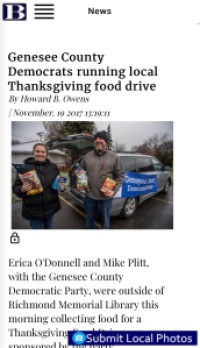
Richard J. Tofel has been looking into the details of legislation that created a $90 million fund to ease the local news crisis in New York State, and he has some questions. The two most important: Are newspapers owned by publicly traded companies truly excluded, as initial reports would suggestion? And what, exactly, is a newspaper?
As I wrote the other day, the program would seem to exclude Gannett, a publicly traded corporation that owns 12 daily newspapers in New York, including the Democrat and Chronicle of Rochester and the Times Herald-Record of Middletown. But Tofel isn’t sure of that, observing that “a separate provision makes all of the newspapers eligible, despite being owned by public companies, because their print circulation has declined by more than 20% in the last five years — as has that of almost every print publication in the country.”
The other major issue is whether digital-only outlets would be eligible. Tofel writes that “whether digital news organizations will be included within what the law refers to as ‘newspapers’” is still up in the air, adding that if “the regulatory definition of ‘newspapers’ excludes digital entrants and isn’t targeted at local news jobs, the bill will have amounted to a belated incumbency protection act for a failing field.”
Among the 200 members of the Empire State Local News Coalition who pushed for this legislation is The Batavian, a digital-only for-profit in western New York. I’ve already heard from Howard Owens, the publisher, who’s worried that his outlet may not be eligible for any subsidies unless the language is clarified.
The fund would set aside $30 million a year for three years to provide assistance to local news organizations that hire and retain journalists — although that, too, is unclear; it’s possible the money would be used for business-side employees, Tofel says. It could serve as a model for other states, but first the details have got to be nailed down.
In an appearance on Editor & Publisher’s vodcast earlier this week, Zachary Richner, the founder of the Empire State coalition, said that the final language had yet to be fully worked out. That will be done not through legislation but administratively, via a governmental agency called Empire State Development.
Leave a comment | Read comments





